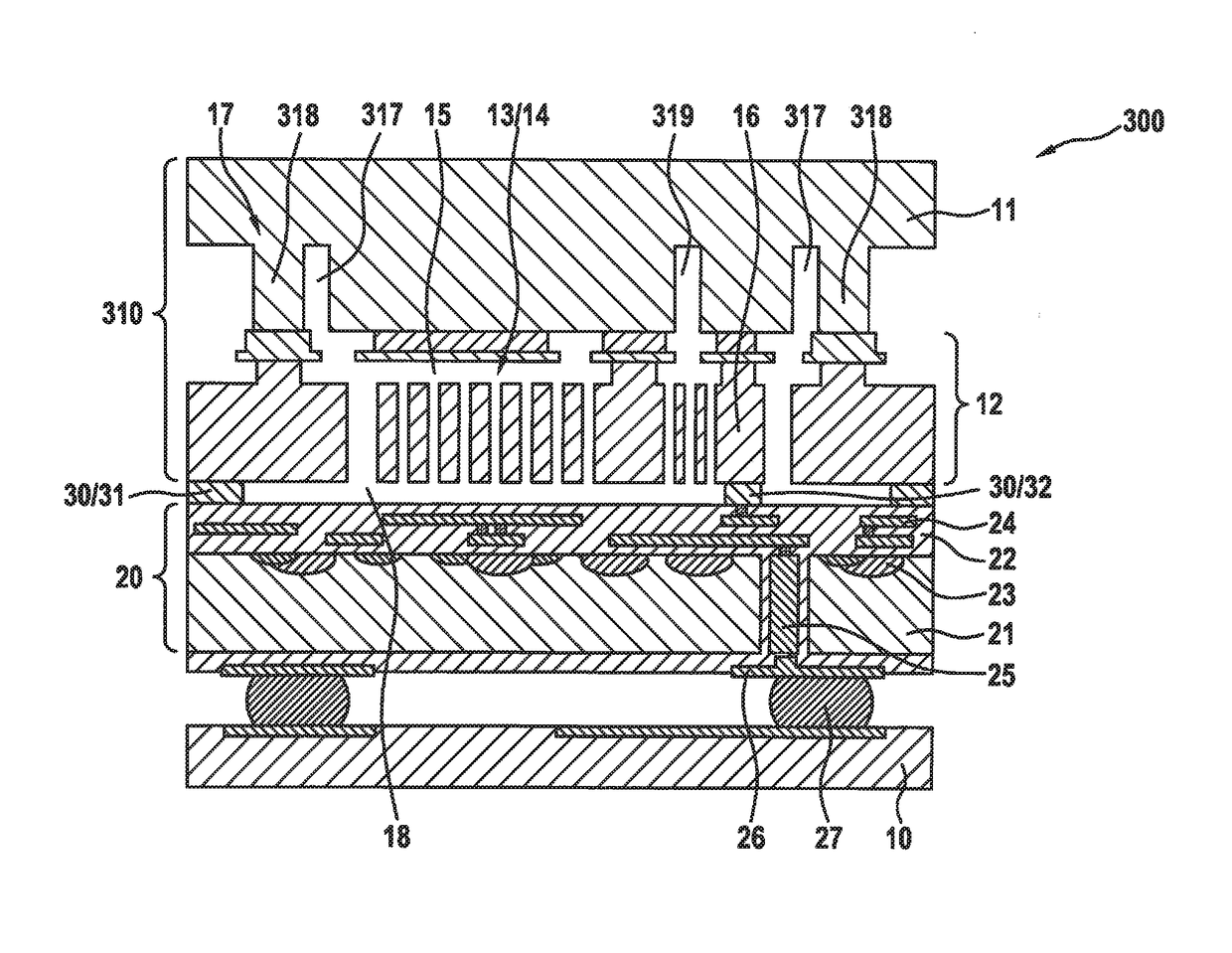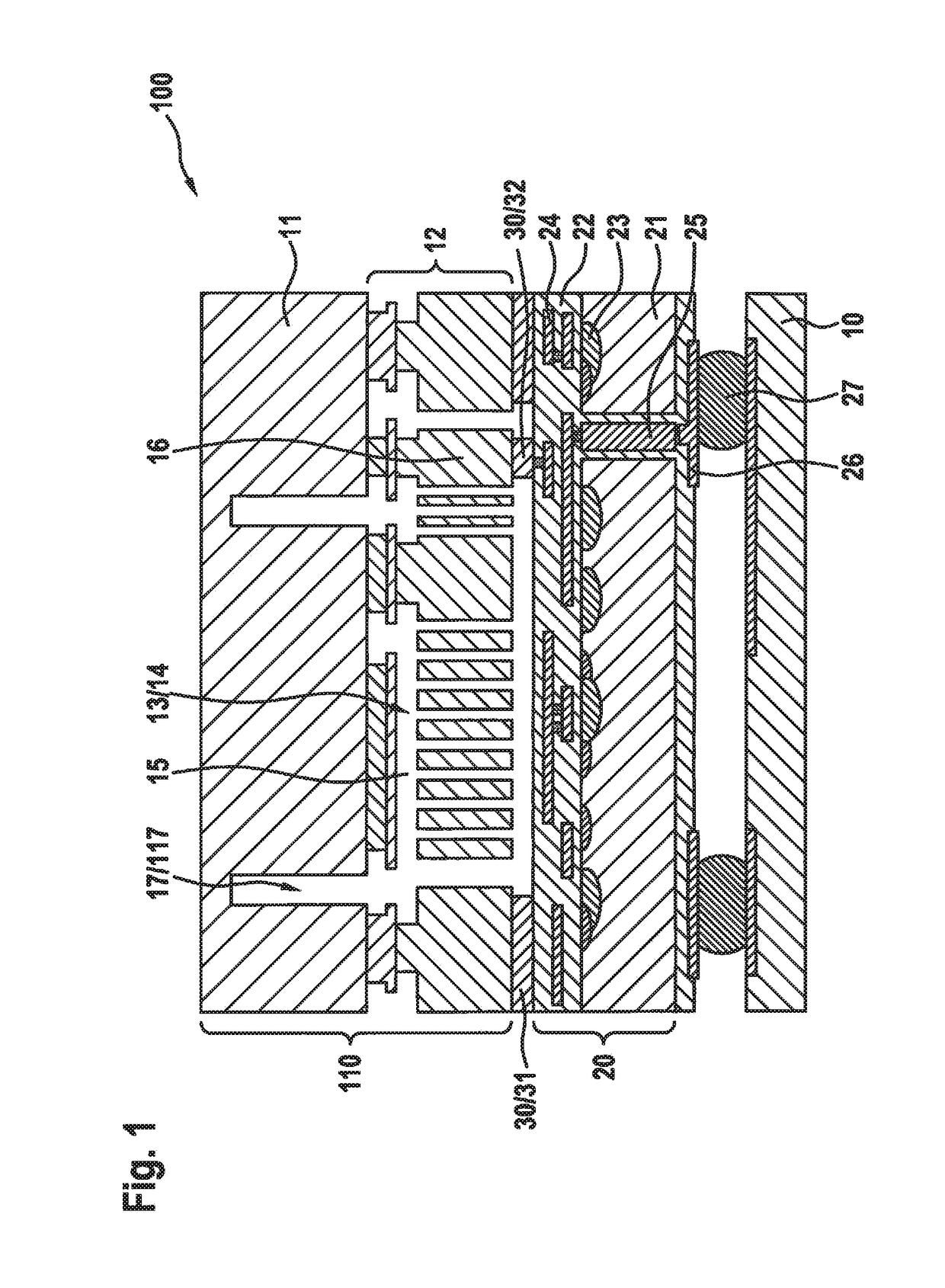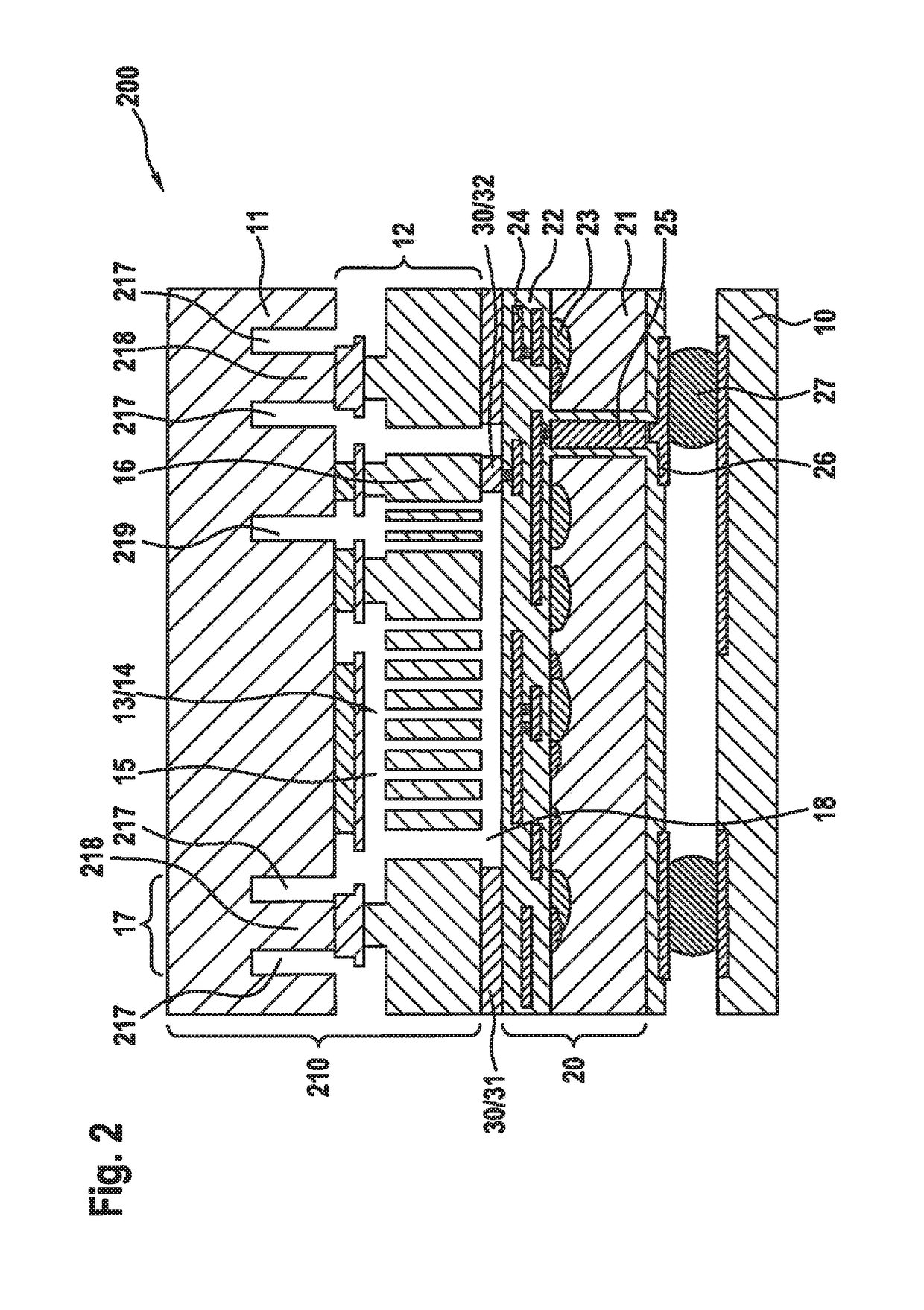MEMS element including a stress decoupling structure and a component including such a MEMS element
a stress decoupling structure and element technology, applied in the direction of semiconductor devices, fluid speed measurement, instruments, etc., can solve the problems of severe impairment of the mems function, decoupling effect, and conventional stress decoupling structure, and achieve the effect of great vertical stress decoupling
- Summary
- Abstract
- Description
- Claims
- Application Information
AI Technical Summary
Benefits of technology
Problems solved by technology
Method used
Image
Examples
Embodiment Construction
[0021]All three vertically hybrid integrated components 100, 200 and 300 shown in FIGS. 1 through 3 are mounted on an application circuit board 10 and include MEMS elements 110, 210 and 310 and an ASIC element 20. MEMS elements 110, 210 and 310 and ASIC element 20 are each assembled face-to-face, i.e., the active side of the MEMS chip, in which the sensor structure is formed, was connected to the active side of the ASIC chip, on which the circuit functions are implemented.
[0022]Sensor structures 13 of MEMS elements 110, 210 and 310 are identical. They include at least one deflectable functional element 14, which together with a signal detector, which are not indicated here in greater detail, are implemented in a layered structure 12 on a MEMS substrate 11. Another part of sensor structure 13 functions as an electrical terminal 16. In order to ensure the movability of this functional element 14, a space 15 is formed at least between functional element 14 and MEMS substrate 11. All ME...
PUM
 Login to View More
Login to View More Abstract
Description
Claims
Application Information
 Login to View More
Login to View More - R&D
- Intellectual Property
- Life Sciences
- Materials
- Tech Scout
- Unparalleled Data Quality
- Higher Quality Content
- 60% Fewer Hallucinations
Browse by: Latest US Patents, China's latest patents, Technical Efficacy Thesaurus, Application Domain, Technology Topic, Popular Technical Reports.
© 2025 PatSnap. All rights reserved.Legal|Privacy policy|Modern Slavery Act Transparency Statement|Sitemap|About US| Contact US: help@patsnap.com



